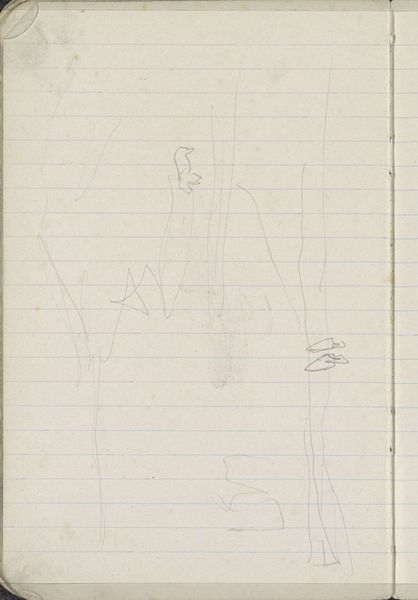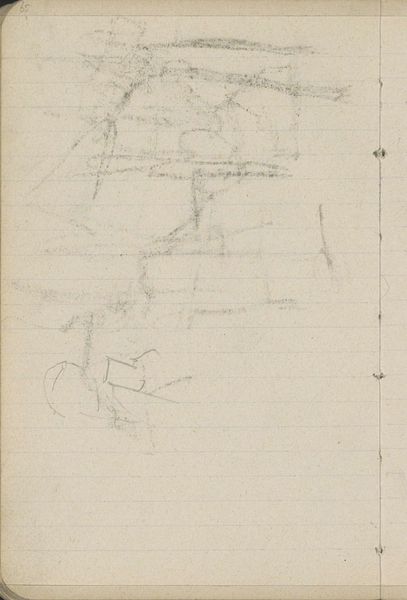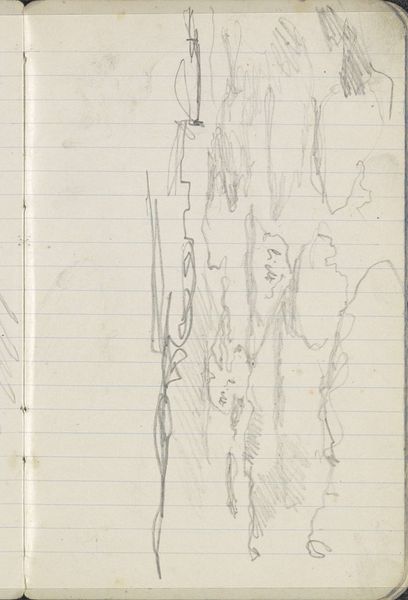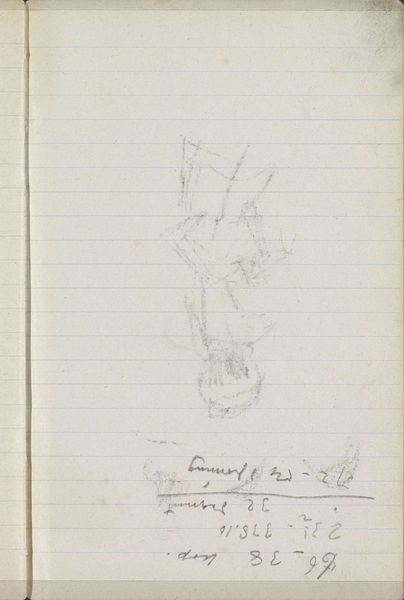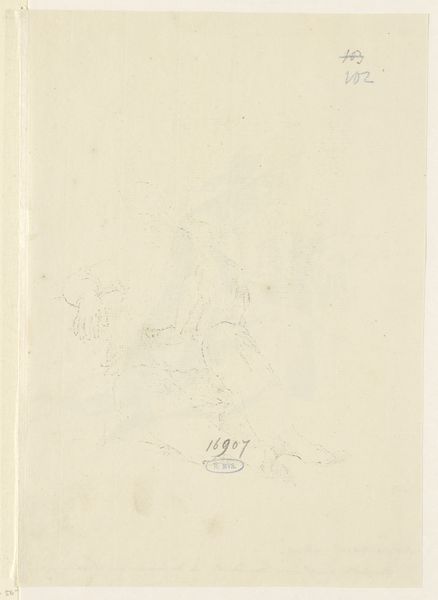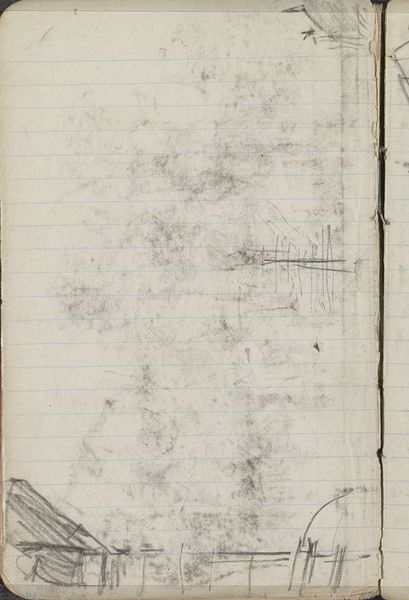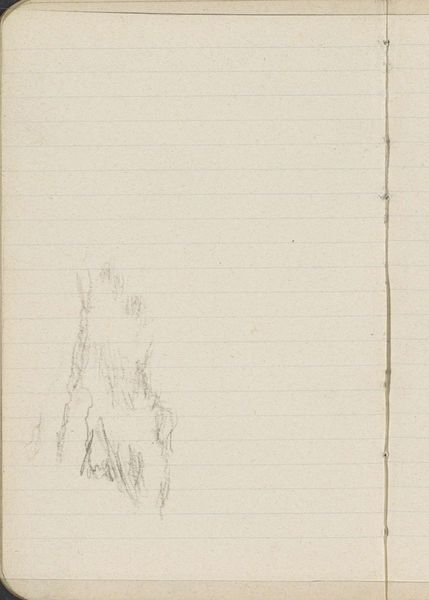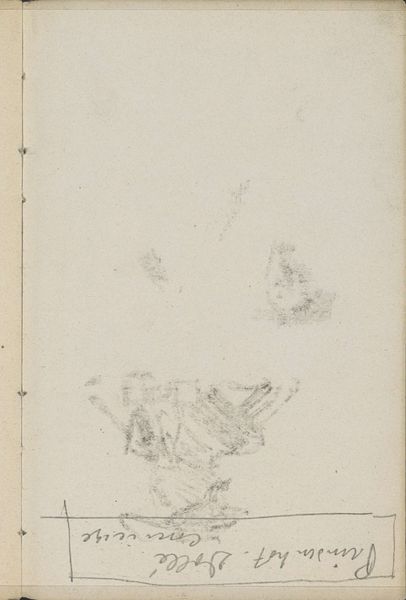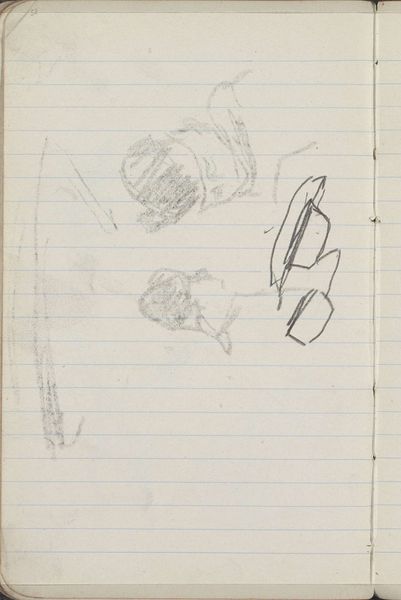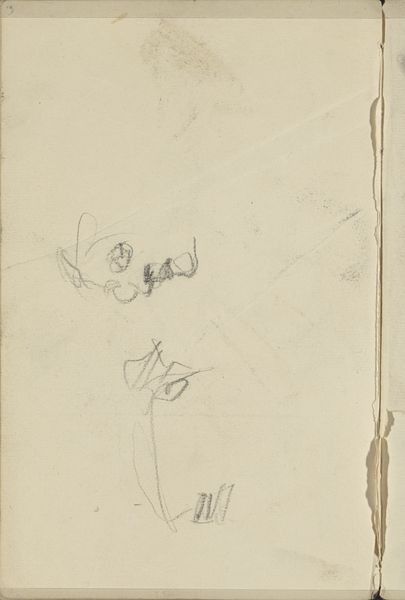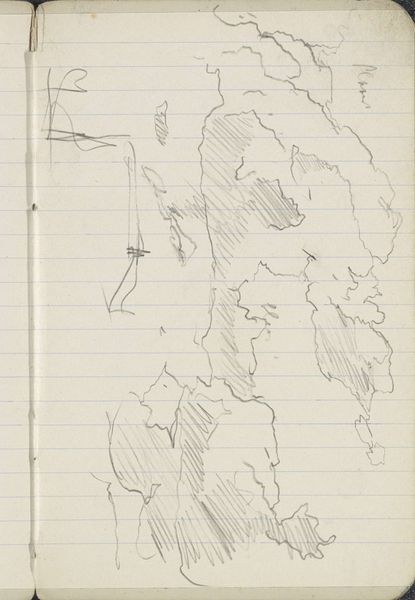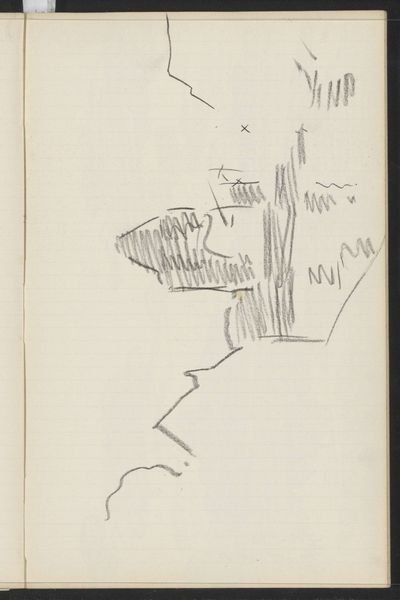
Copyright: Rijks Museum: Open Domain
Editor: This is a pencil sketch entitled "Annotatie" created by George Hendrik Breitner between 1893 and 1898, currently held at the Rijksmuseum. It looks like a page from a sketchbook, quick and spontaneous. The figures are just barely there. What do you make of a sketch like this, something so fleeting and incomplete? Curator: What interests me about this particular page is precisely its incompleteness, its glimpse into Breitner’s process. Think about the cultural context. In the late 19th century, the idea of the "sketch" as a valid art form was still developing. Academic painting emphasized finish and polish, but Impressionists and artists like Breitner were increasingly drawn to capturing the immediacy of experience. Do you think that Breitner intended for these sketches to be public? Editor: That's a great question. Considering it's in a sketchbook, it seems unlikely. It’s like a private thought made visible. I suppose sketchbooks offered artists the freedom to experiment without the pressure of creating a finished piece for exhibition. Curator: Precisely. And this freedom is politically charged! Breitner, and others embracing this aesthetic, were challenging the established hierarchies of art. By displaying sketches, even now in a museum setting, we are questioning what constitutes ‘art’ and whose vision gets to be seen, valued, and remembered. Notice, even the support is a lined paper, such as an artist might buy at the local store, further evidence this wasn't created for high society. What do you think the museum's role is, in exhibiting what was never intended to be shown publicly? Editor: Well, it offers us a unique view into the artist's mind and process, and it broadens our understanding of what art can be, disrupting established norms. It allows us to engage with art on a more intimate, human level. Seeing this sketch definitely gives me a new perspective on Breitner's finished works, actually. Curator: It's a peek behind the curtain, isn't it? And it forces us to ask questions about value, intention, and the power of institutions in shaping artistic reputations. Editor: Exactly. It's made me consider the political power of what gets left out of the frame, too. Thanks for that insight!
Comments
No comments
Be the first to comment and join the conversation on the ultimate creative platform.
